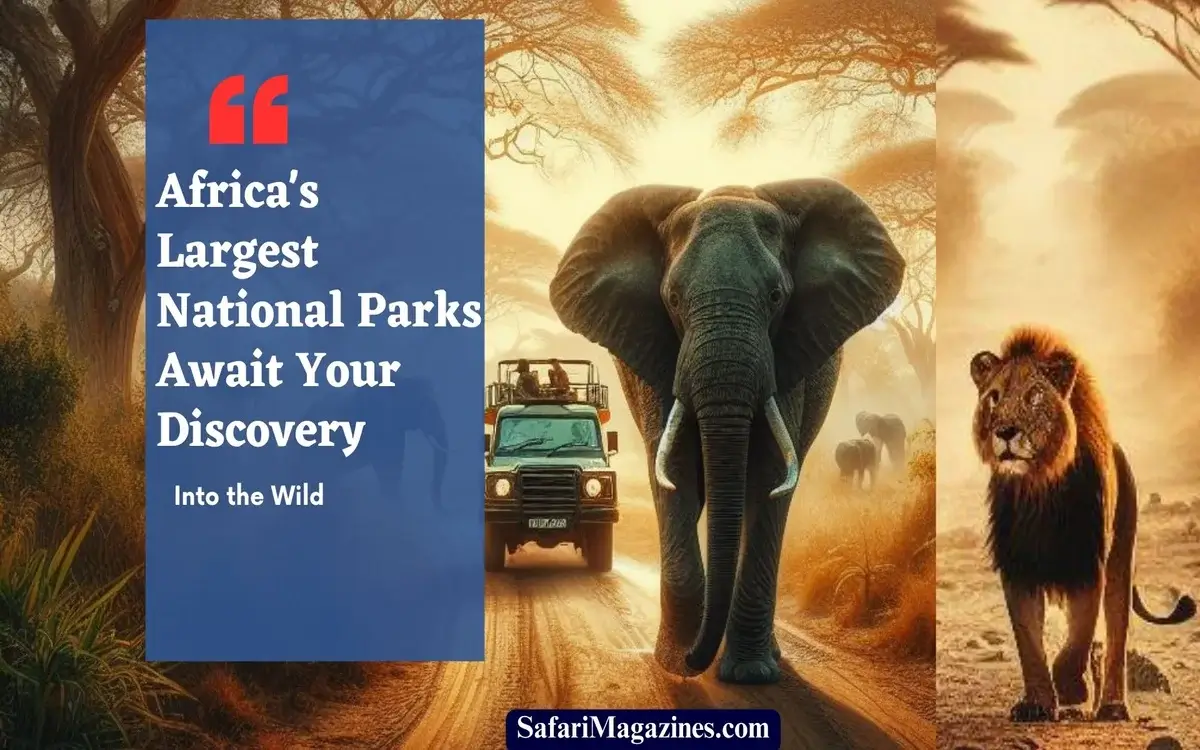
Africa’s Largest National Parks, Exploring the Wildlife. Into the Wild: Largest National Parks in Africa Await Your Discovery. Africa, the birthplace of humanity and a continent filled with stunning scenery and a wide variety of animals. It is home to some of the most amazing national parks on the planet. These protected areas allow visitors to fully admire the wonders of nature. Also it’s provide crucial habitats for a wide range of animals. In this article, we’ll travel to some of Africa’s largest national parks. Each has a unique charm and point of interest.
Table of Contents
ToggleSerengeti National Park: Where the Wilderness Roams Free
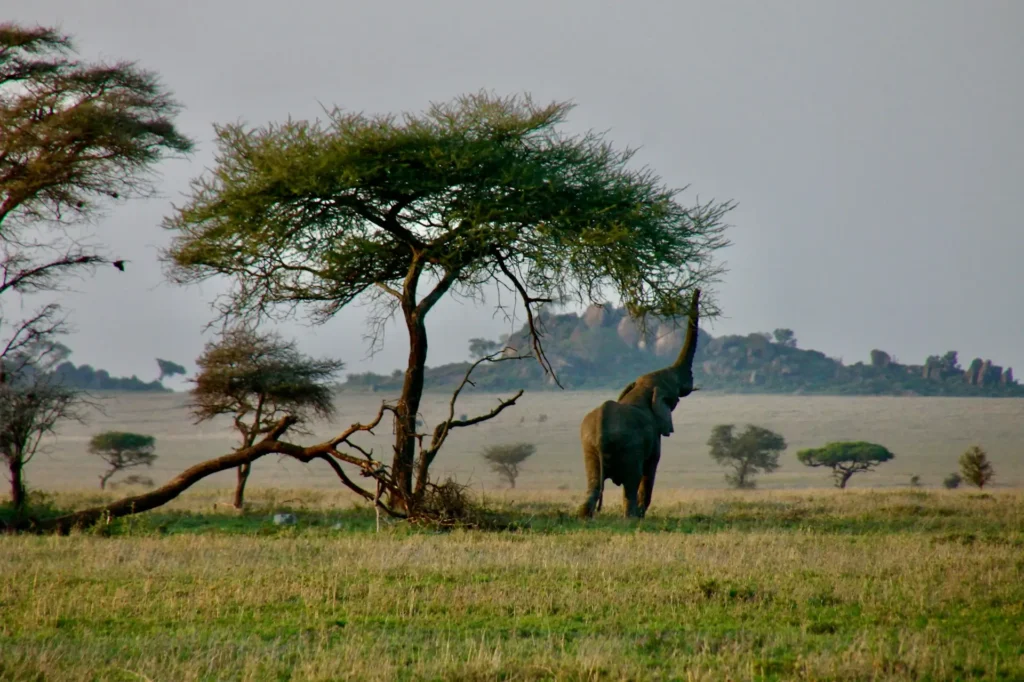
Our journey begins in Tanzania, where the iconic Serengeti National Park sprawls across an immense 14,750 sq.-km of savannah plains, dotted with acacia trees and rocky outcrops. Serengeti is renowned for its legendary Great Migration. It hosts millions of wildebeest, zebras, and other herbivores. As they traverse the vast plains in search of fresh grazing grounds, pursued by Africa’s most iconic predators. So, visitors can witness this awe-inspiring spectacle. For example, guided game drives, hot air balloon safaris, or cultural tours, offering a glimpse into the raw beauty and untamed wilderness of Africa.
Kruger National Park: A Sanctuary of Wilderness
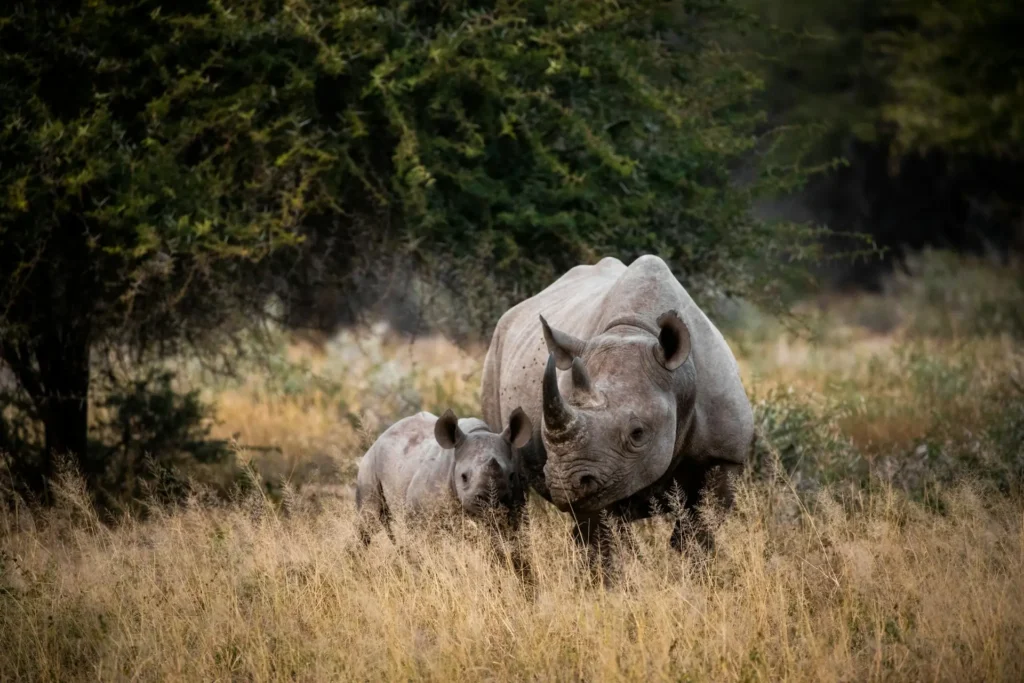
Venturing south to South Africa, we encounter the majestic Kruger National Park. One of the oldest and largest game reserves in Africa, covering a staggering 19,485 sq.-km. Boasting an impressive array of wildlife, including the iconic Big Five. So, Kruger offers visitors the opportunity to embark on thrilling safari adventures amidst diverse landscapes ranging. From open savannahs to dense forests and meandering rivers. Kruger National Park’s conservation efforts have played an important role. It’s protecting endangered species and preserving the park’s ecological heritage for future generations.
Continue reading: Africa’s Largest National Parks Await Your Discovery
Kafue National Park: Africa’s Best-Kept Secret
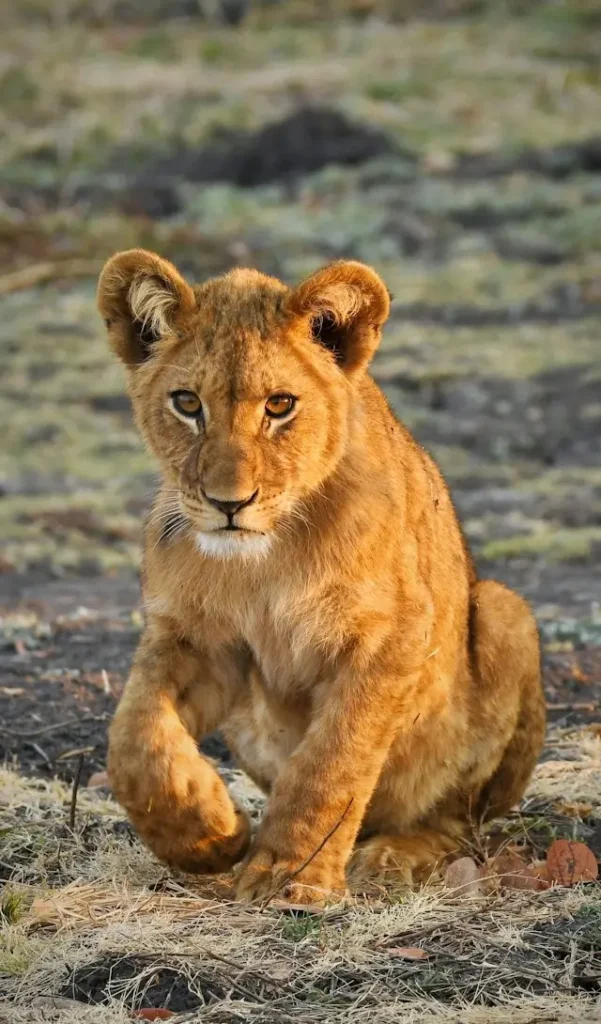
Nestled in the heart of Zambia, Kafue National Park stands as Africa’s largest national park. Kafue spanning an astonishing 22,400 sq.-km of pure wilderness. Kafue, although small, is still largely unexplored by most tourists. This offers adventurous travelers the possibility of discovering pristine places and seeing a variety of creatures, including elephants, lions and leopards. Kafue, an almost undiscovered African gem. As a result, sustainable tourism practices are promoted through environmental conservation programs led by international organizations and local groups.
Etosha National Park: Where the Desert Meets Wildlife
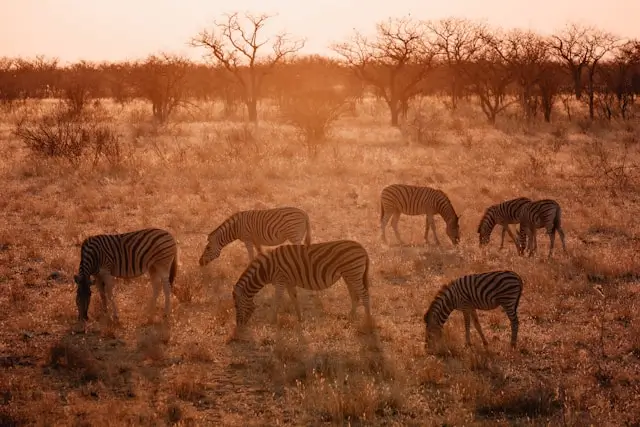
In the arid landscapes of Namibia lies Etosha National Park. A surreal wilderness characterized by its expansive salt pan and diverse wildlife. It is covering an approximate size of 22,270 sq.-km. So, Etosha is a haven for a diverse range of animals, including antelopes, lions, cheetahs, and vast herds of elephants. Etosha offers a unique combination of desert landscape and wildlife interactions. For example, visitors can choose from self-drive safaris, guided game drives, or just relax in one of the park’s lodges with views of waterholes filled with animal activity.
Continue reading: Into the Wild: Africa’s Largest National Parks Await Your Discovery
Tsavo National Park: Land of Giants and Legends
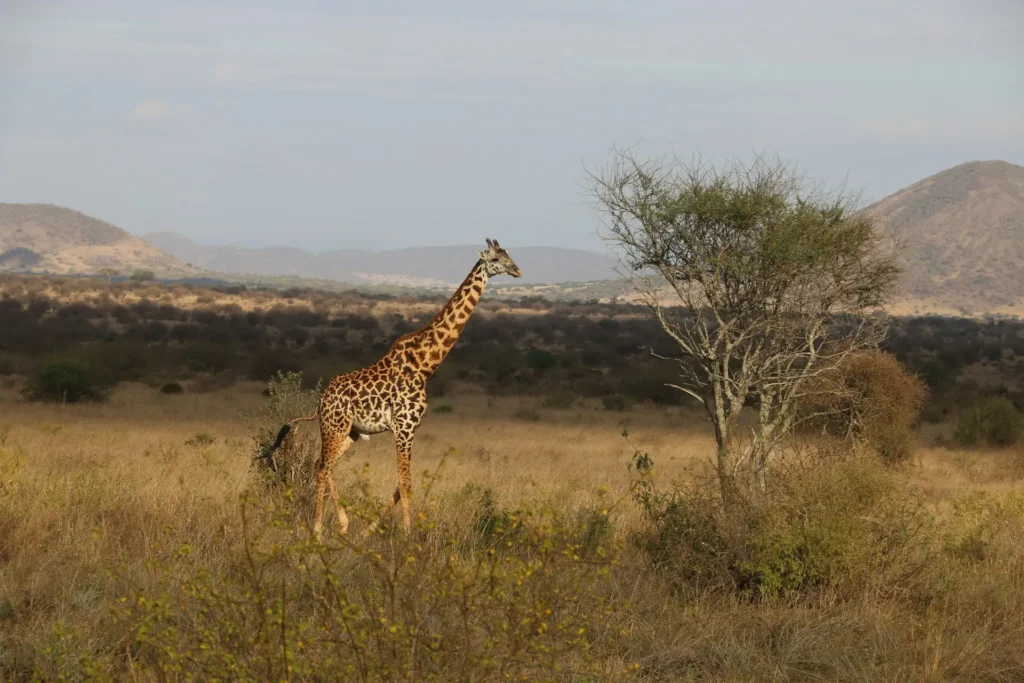
Divided into Tsavo East and Tsavo West, Tsavo National Park in Kenya is one of the largest wildlife sanctuaries in the world. Tsavo National Park is covering a combined area of over 20,800 sq.-km. It’s renowned for its vast landscapes, rugged terrain, and iconic landmarks. For example, the lava flows of Chyulu Hills and the mystical Mzima Springs. Also, Tsavo offers visitors a glimpse into untamed wilderness. For example, herds of red elephants, elusive leopards and the legendary maneless lions. So, Tsavo’s diverse ecosystem is a testament to the resilience of nature in the face of adversity.
Chobe National Park: Where Rivers Run Wild
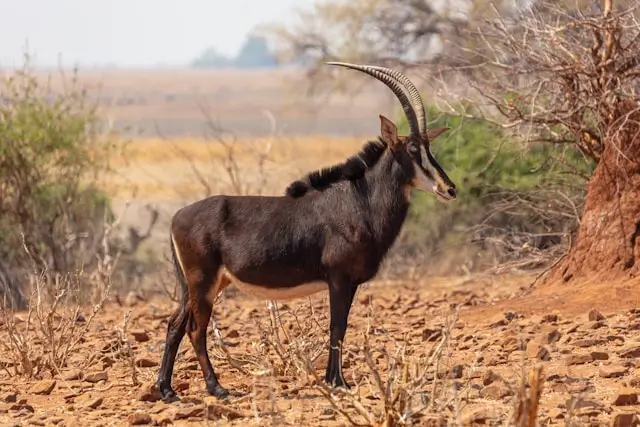
Nestled in the heart of Botswana, Chobe National Park is renowned for its diverse landscapes and prolific wildlife, particularly along the Chobe River. Chobe is covering an area of approximately 11,700 sq.-km. It’s home to one of the largest concentrations of elephants in Africa. As well as a myriad of other species, including hippos, crocodiles, and an array of birdlife. Visitors can explore the park by boat, enjoying sunset cruises along the river or embarking on game drives through the lush floodplains. This offering unparalleled opportunities for wildlife viewing and photography.
Continue reading: Into the Wild: Africa’s Largest National Parks Await Your Discovery
Virunga National Park: Africa’s Oldest National Park
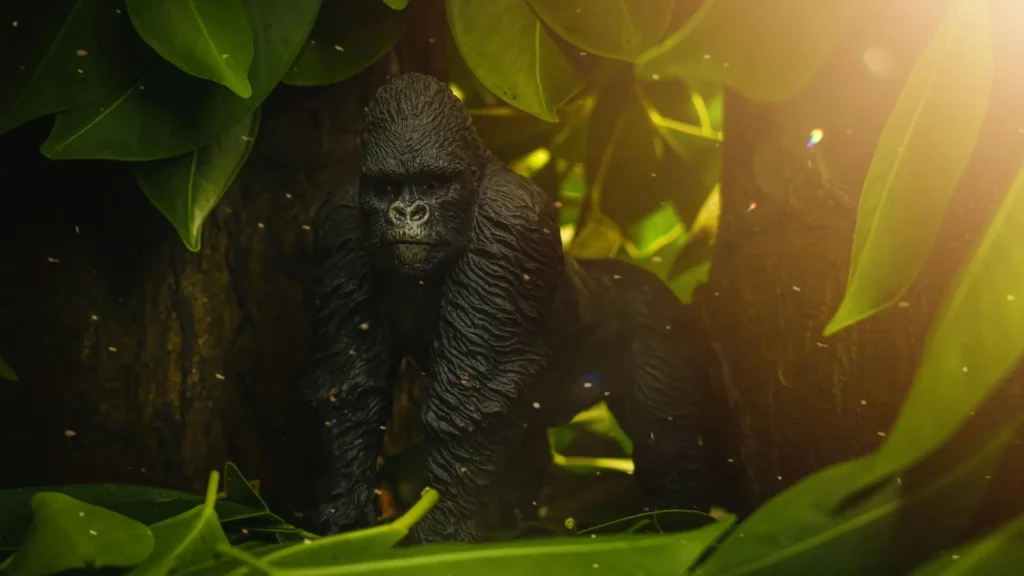
Nestled in the eastern Democratic Republic of Congo, Virunga National Park is Africa’s oldest national park and a UNESCO World Heritage Site. Virunga is spanning over 7,800 sq.-km. There are many different types of this biodiverse paradise. It is home to a multitude of ecosystems. For example, the famed Virunga Massif—home of the critically endangered mountain gorillas, dense rainforests, and volcanic volcanoes. Virunga’s dedicated rangers and conservationists continue to protect precious wildlife, in the face of many challenges, including poaching and armed conflict. They also encourage sustainable tourism, ensuring its survival for future generations.
Okavango Delta: Jewel of the Kalahari
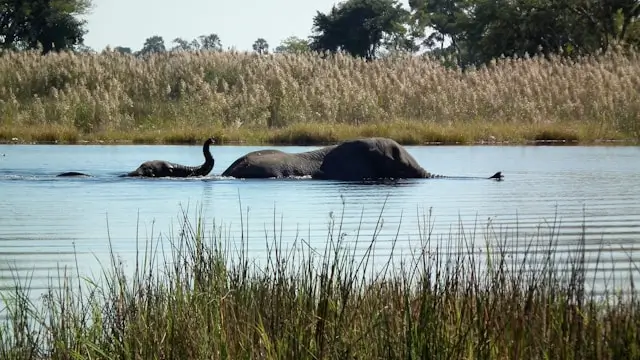
Although not a national park in itself, the Okavango Delta in Botswana is a UNESCO World Heritage Site . Also it’s one of Africa’s most iconic wilderness areas. Fed by the Okavango River, this vast inland delta transforms the arid Kalahari Desert into a lush oasis, teeming with wildlife and aquatic habitats. Surrounding the delta are several protected areas, including Moremi Game Reserve and Chobe National Park. Which together form a vast ecosystem supporting a myriad of species. From elephants and buffalo to lions and leopards. Conservation efforts within the Okavango Delta focus on preserving its delicate balance of water and wildlife. This efforts ensure its continued prosperity for generations to come.
Continue reading: Into the Wild: Africa’s Largest National Parks Await Your Discovery
Amboseli National Park: In Kilimanjaro’s Shadow
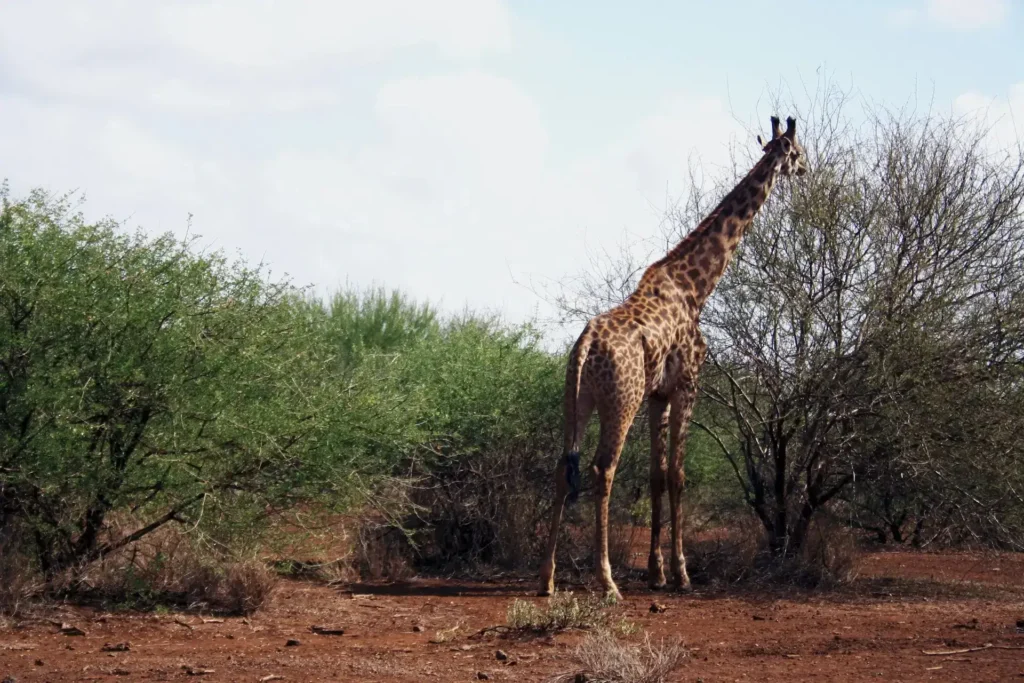
Nestled at the foot of Mount Kilimanjaro in Kenya lies Amboseli National Park, a scenic wilderness renowned for its iconic landscapes and abundant wildlife. Amboseli covering an area of approximately 400 sq.-km. It offers visitors the chance to witness Africa’s majestic giants, including elephants, against the backdrop of Africa’s highest peak. So, the park’s diverse habitats, ranging from savannah plains to wetlands and acacia woodlands, support a variety of species, making every safari adventure a memorable experience.
Hwange National Park: Zimbabwe’s Wildlife Sanctuary
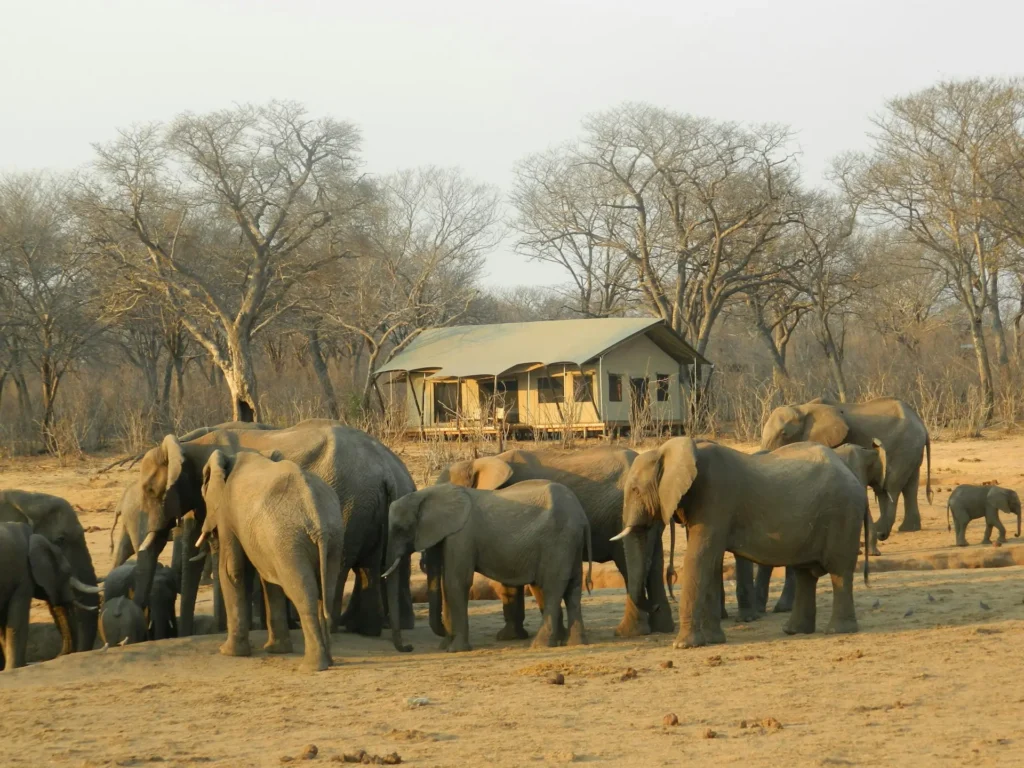
Spanning over 14,600 sq.-km in western Zimbabwe, Hwange National Park is the country’s largest game reserve and a haven for wildlife enthusiasts. For example, Elephants, lions, and giraffes are just a few of the many animals that call Hwange home. Visitors can take game drives, walking safaris, or guided excursions to experience this enormous wilderness. Conservation efforts in Hwange National Park aim to safeguard its precious wildlife and habitats, securing a sustainable future for this renowned African wilderness.
Continue reading: Into the Wild: Africa’s Largest National Parks Await Your Discovery
Murchison Falls National Park: Where the Nile Roars

Situated in northern Uganda, Murchison Falls National Park is a pristine wilderness encompassing the dramatic Murchison Falls, where the mighty Nile River cascades through a narrow gorge. Murchison Falls National Park covering about 3,850 sq. km. So, elephants, hippos, crocodiles, and a variety of bird species are among the many animals that call this area home. Tourists who visit Murchison Falls can partake in boat rides along the Nile, go on safari drives across the savannah, and hike up to the falls’ summit. Which provides breathtaking views of the surrounding scenery.
Mana Pools National Park: Exploring the Zambezi Floodplains
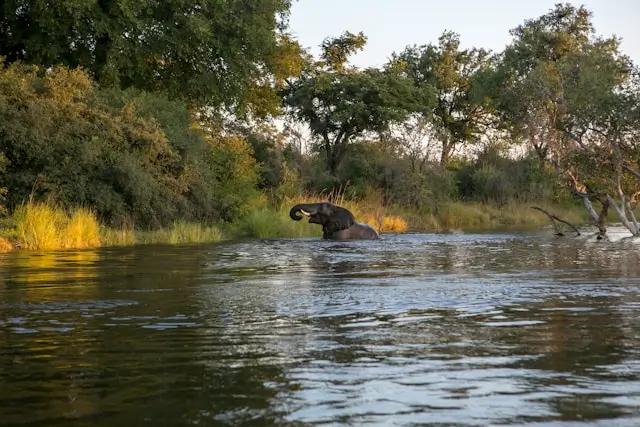
The Mana Pools National Park is Located in northern Zimbabwe. It is known for its natural beauty and abundant wildlife, especially along the floodplains of the Zambezi River. Mana Pools is covering an area of approximately 2,200 sq.km. It’s a sanctuary for elephants, lions, and various types of antelope. It also has a wide range of bird species. Hiking, kayaking, or game driving offer visitors the chance to see the park’s wildlife and breathtaking surroundings. This African park is truly iconic.
Continue reading: Into the Wild: Africa’s Largest National Parks Await Your Discovery
Selous Game Reserve: Tanzania’s Hidden Gem
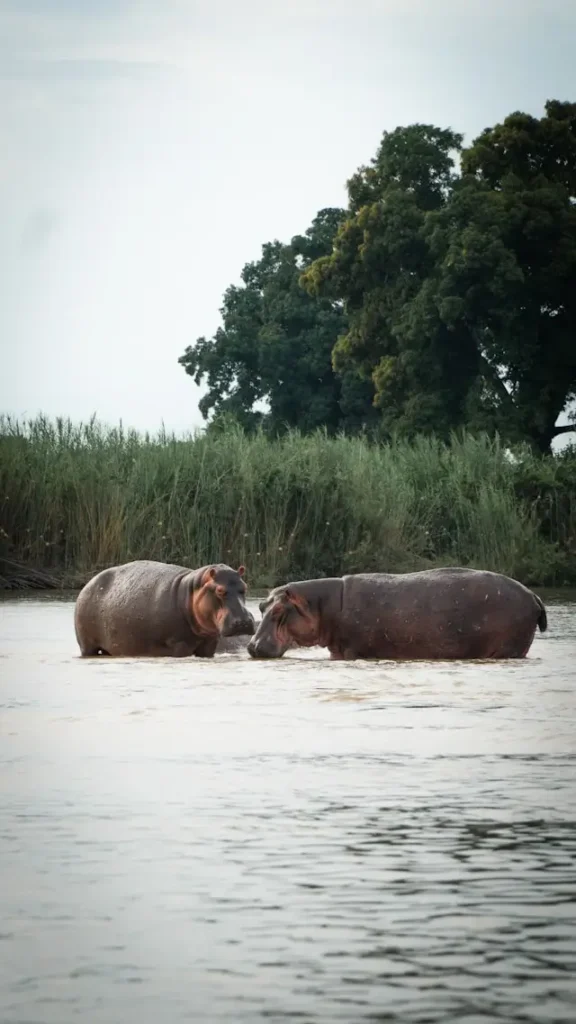
Encompassing over 50,000 sq.-km of pristine wilderness in southern Tanzania, Selous Game Reserve is one of the largest protected areas in Africa and a UNESCO World Heritage Site. It named after British explorer Frederick Selous. The reserve is renowned for its diverse habitats, including grasslands, woodlands, and wetlands. It’s support a wealth of wildlife, including elephants, lions, and hippos. So, visitors to Selous can go on guided safaris, boat cruises, and walking tours. This offering a unique opportunity to explore this untamed wilderness and encounter its inhabitants up close.
Gorongosa National Park: A Story of Restoration
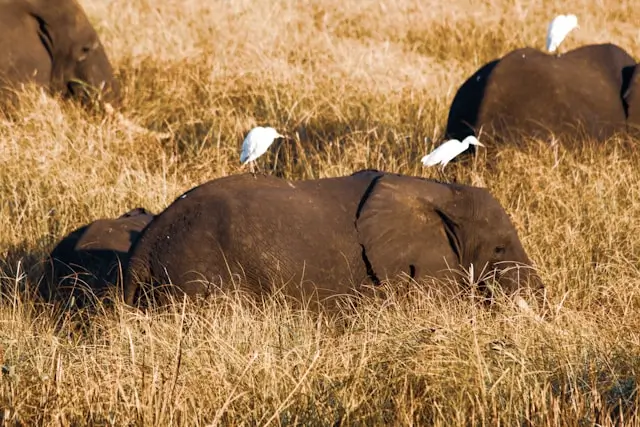
Nestled in the heart of Mozambique, Gorongosa National Park is a testament to the power of conservation and ecological restoration. Once devastated by civil conflict, Gorongosa has undergone a remarkable transformation in recent years, thanks to the efforts of conservationists and local communities. Today, the park boasts a thriving ecosystem, home to a many wildlife, including elephants, lions, and rare antelope species. Visitors to Gorongosa can explore the park on guided safaris, birdwatching tours, and cultural experiences. So, this gaining insight into this inspiring conservation success story.
Continue reading: Into the Wild: Africa’s Largest National Parks Await Your Discovery
Masai Mara National Reserve: The Crown Jewel of Kenya
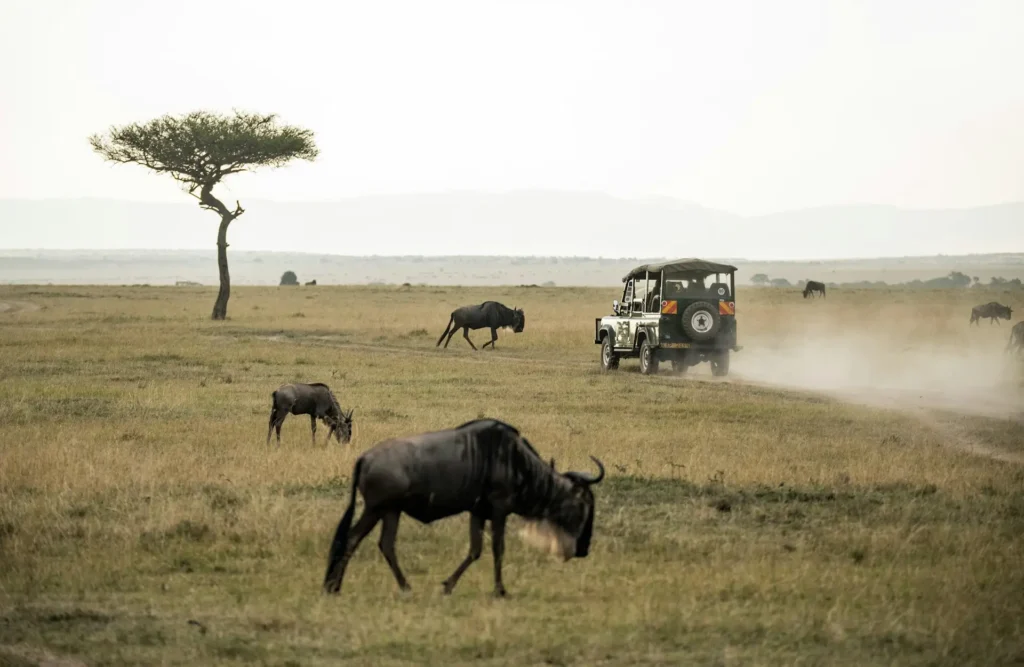
Stretching across the vast plains of southwestern Kenya, the Masai Mara National Reserve is a wildlife place and a UNESCO World Heritage Site. The reserve, which is well-known for the amazing Great Wildebeest Migration, is a year-round haven for a plethora of species. This including elephants, lions, and leopards. Visitors can watch the drama of the savannah through guided safaris, hot air balloon safaris, or cultural visits to Masai villages. So, this offering an unforgettable safari experience in the heart of Africa.
Lower Zambezi National Park: Exploring Zambia’s Wild Frontier
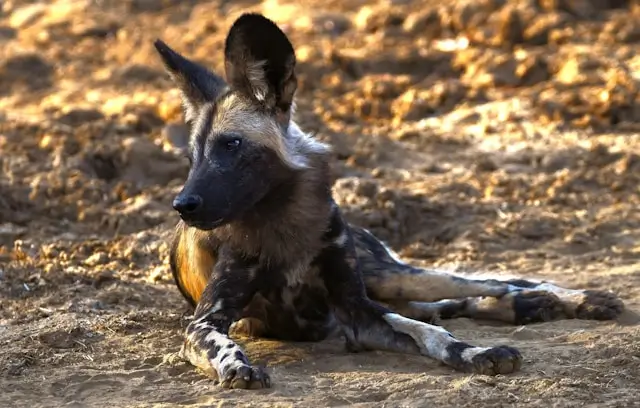
Nestled along the banks of the mighty Zambezi River in Zambia, Lower Zambezi National Park is a pristine wilderness renowned for its scenic beauty and abundant wildlife. It is covering an area of approximately 4,090 sq.-km. The park is home to elephants, hippos, and crocodiles, as well as numerous bird species. Visitors to Lower Zambezi can enjoy boat cruises along the river, game drives through the savannah, and walking safaris. So, this offering a unique opportunity to explore this untamed wilderness and encounter its inhabitants up close.
Bwindi Impenetrable National Park: Looking for Mountain Gorillas
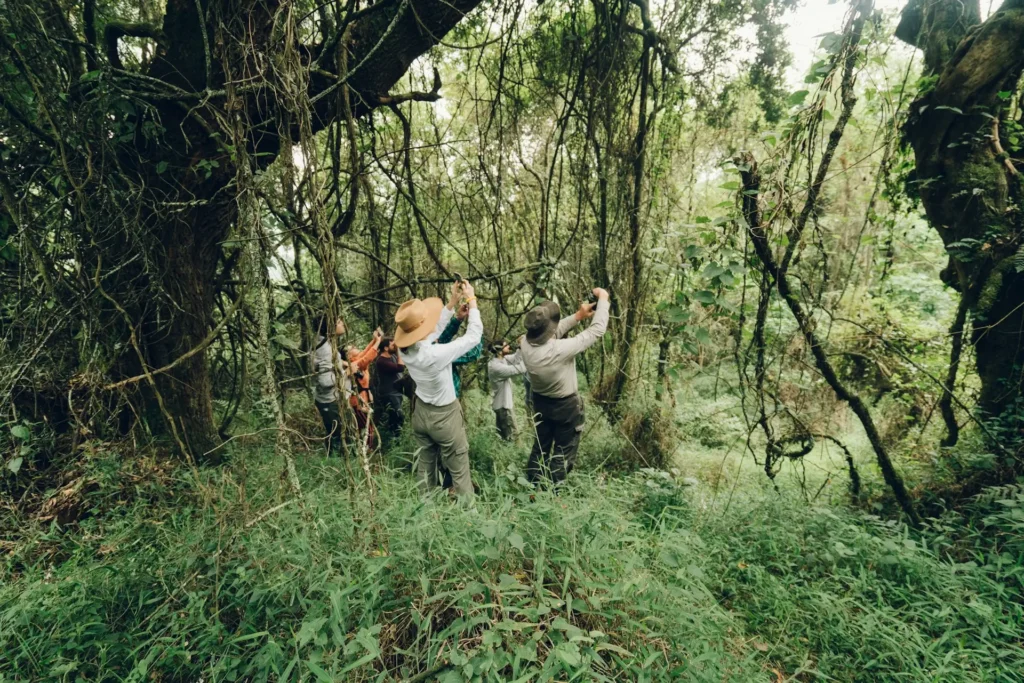
Located in southwestern Uganda, Bwindi Impenetrable National Park is a UNESCO World Heritage Site and a haven for mountain gorillas. Covering an area of approximately 331 square kilometers, the park is home to nearly half of the world’s remaining mountain gorilla population, making it one of the best places in Africa for gorilla trekking. Visitors to Bwindi can embark on guided hikes through dense forests, accompanied by experienced trackers, to observe these majestic primates in their natural habitat. So, this offering a once-in-a-lifetime wildlife encounter.
Continue reading: Into the Wild: Africa’s Largest National Parks Await Your Discovery
Ngorongoro Conservation Area: The Cradle of Humanity
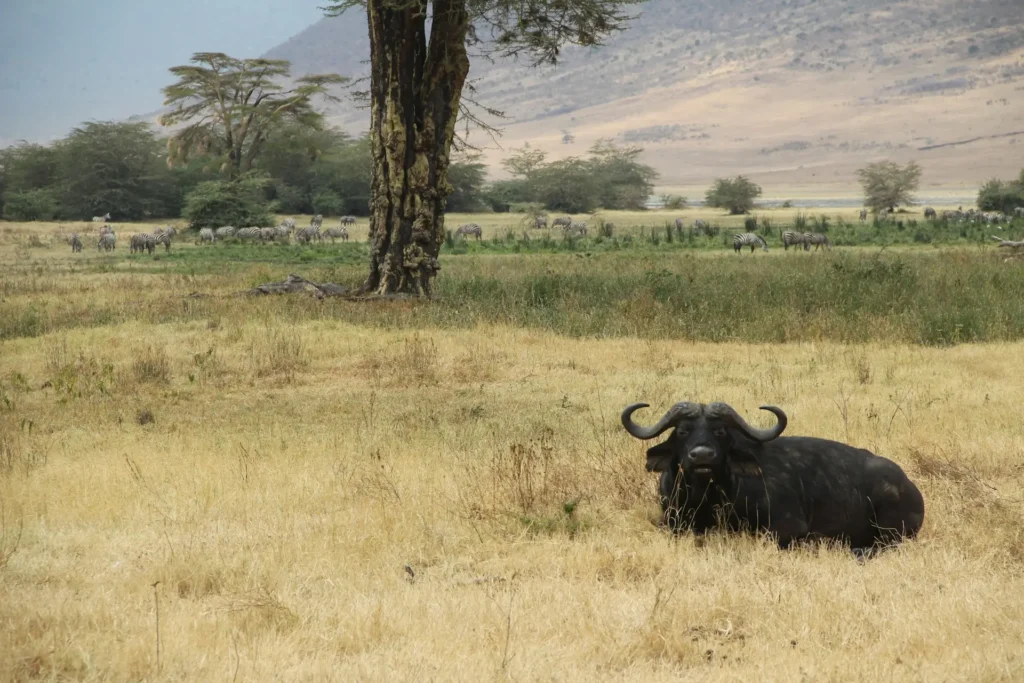
Encompassing the iconic Ngorongoro Crater in northern Tanzania. The Ngorongoro Conservation Area is a UNESCO World Heritage Site and a haven for wildlife enthusiasts. Ngorongoro is covering an impressive 8,300 sq.-km. This region boasts a wide range of environments, including grasslands, woodlands, swamps, and lakes. These diverse habitats provide a thriving home for a variety of animals, such as elephants, lions, and rhinos. Explorers of Ngorongoro can partake in guided safaris, cultural tours, and hiking adventures. This allowing them to intimately experience this ancient terrain and encounter its fascinating inhabitants.
Liwonde National Park: Exploring Malawi’s Wilderness

Nestled along the banks of the Shire River in Malawi, Liwonde National Park is a hidden gem waiting to be discovered. Liwonde is covering an area of approximately 550 sq.-km. This park is home to elephants, hippos, and crocodiles, as well as numerous bird species. Visitors to Liwonde can enjoy boat cruises along the river, game drives through the savannah, and walking safaris. This offering a unique opportunity to explore this pristine wilderness and encounter its inhabitants up close.
Tassili n’Ajjer National Park, Algeria
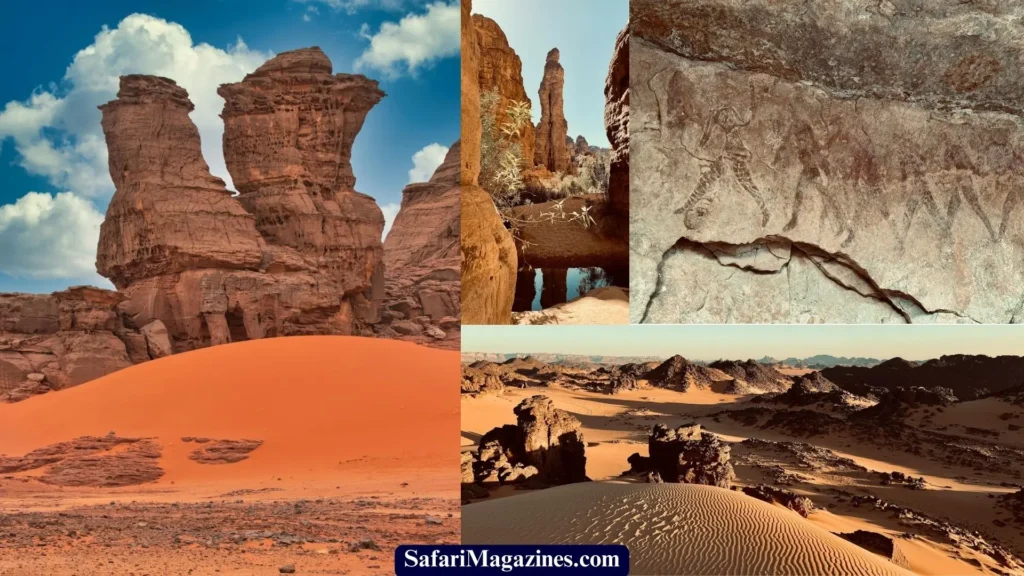
Tassili n’Ajjer National Park in Algeria proudly holds the title of Africa’s Largest National Park. It is covering an area over 72,000 sq.km. Tassili n’Ajjer National Park is renowned for its stunning rock formations, ancient cave paintings, and dramatic landscapes shaped by wind and water over millennia. This national park with its expansive territory is a place for unique geological formations, ancient cave art, and a rich diversity of wildlife. It is home to many wildlife, such as Barbary sheep, gazelles, and desert foxes, in addition to being a UNESCO World Heritage Site. So, this makes it a jewel in Africa’s environmental conservation crown.
Related topics:
- Exploring the World’s Biggest National Parks: Unveiling Nature’s Grandeur
- Discover the Largest National Parks in Europe: Exploring Nature and Wild Landscapes
- Exploring the Largest National Parks in Asia
- The Largest National Parks in the United States of America: Natural Treasures of the USA
- China’s Largest National Parks: Discovering Nature’s Grandeur
- Australia’s Largest National Parks: Exploring the Wilderness from Coast to Desert
Summary: Preserving Africa’s Natural Heritage
Africa’s national parks are not only havens for wildlife but also vital contributors to global biodiversity conservation. From plains of Serengeti to wilderness of Liwonde, these protected areas serve as living laboratories for ecological research, sustainable tourism, and community development. As stewards of our planet’s natural heritage, it is imperative that we support efforts to conserve these invaluable ecosystems and promote responsible travel practices. By safeguarding Africa’s largest national parks, we can ensure a brighter future for both wildlife and humanity.
FAQs
Q1: Which is the largest national park in Africa?
A1: Kafue National Park in Zambia holds the title of Africa’s largest national park, spanning over 22,400 square kilometers.
Q2: What is the Great Migration in Serengeti National Park?
A2: The Great Migration refers to the annual movement of millions of wildebeest, zebras, and other herbivores across the plains of Serengeti and Masai Mara in search of fresh grazing lands.
Q3: How can I visit these national parks in Africa?
A3: Most national parks in Africa offer guided safaris, self-drive options, and accommodations ranging from luxury lodges to tented camps, catering to diverse preferences and budgets.
Q4: Are these national parks safe to visit?
A4: While safety precautions should always be taken, national parks in Africa are generally safe for visitors, with experienced guides and park rangers ensuring a secure environment for wildlife viewing and exploration.
Q5: How can I contribute to conservation efforts in African national parks?
A5: You can support conservation initiatives by choosing responsible tour operators, practicing sustainable travel habits, and donating to reputable organizations dedicated to wildlife conservation and community development in Africa.
